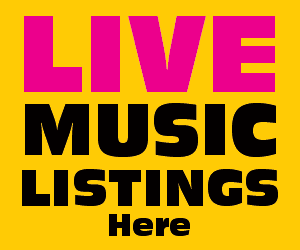Okay, I know I’m supposed to be a music nerd, but I’m less of a nerd than a fan. Music moves me. I don’t try to analyze it too much, it’s not how I listen to music—which is the main reason I almost never write reviews. I was listening to ‘OZ this morning and Olivia Greene was playing Louis Armstrong cuts, in honor of the 12th annual Satchmo Summerfest, this weekend.
The first Satchmo Summerfest took place in the summer of 2000. It was created and timed to coincide with Ken Burns’ series Jazz. If you’ve never seen this series, please do yourself a favor, and buy it. It’s well worth your viewing time.
Satchmo Summerfest is still a small festival, but the people who attend it are rabidly loyal, and are growing annually. One of OffBeat’s Canadian subscribers stopped in the office to say hello because he’s in town to attend the seminars and to hear jazz. He’s been to 10 of the last Satchmo Summerfests, and he literally drives from St. Catharines (near Niagara Falls) to New Orleans every year. Such is the love for Louis Armstrong and jazz.
I’m not a jazz musician; I’m a fan of the music; what I learned from Burns’ documentary series is the importance of Louis Armstrong to the art form. Before Armstrong, jazz’s focus was on a band’s improvisations; there was no focus on solo performances. Armstrong changed all that. He popularized scat singing with his distinctive voice and his expressive way of bending and changing vocals and lyrics. He changed music forever.
Armstrong was also the first really popular African-American popular performer. This I can remember quite well (I’m old enough!). He took a stand during America’s civil rights crises. Armstrong used his musical ability to transcend a miserably poor childhood to become arguably America’s most beloved entertainer, ever. Quite an achievement for a poor black kid from New Orleans.
Unfortunately, Satchmo didn’t stay here. His upbringing subjected him to much of the bad in New Orleans, and he was eventually placed into the Colored Waifs’ Home after shooting a gun into the air (a pastime that everyone in New Orleans still experiences every New Year’s Eve). He and the Jewish Karnofsky family, for whom he worked as a young teenager, suffered a lot of discrimination in their own home town. New Orleans was the birthplace of Armstrong, but he didn’t call it physical home (although he did dearly love New Orleans, as it gave him musical, spiritual, and culinary inspiration his entire life). He moved to Chicago, and then New York, back again, and traveled the world, but never again lived in his city of birth, which claims him as their native son, and has even recently named its airport after him.
It’s a pity and a shame that New Orleans has not honored more of its famous local musicians with monuments and building names.
There’s New Orleans Musical Legends Park on Bourbon Street that contains statue likenesses of Pete Fountain, Al Hirt, Irma Thomas, Chris Owens, Fats Domino, Louis Prima and Ronnie Kole. Then there’s “Professor Longhair Square” on the neutral ground in front of Tip’s on Napoleon Avenue. Of course, there’s Congo Square and Armstrong Park, which has been sorely neglected and underappreciated for decades. Wouldn’t it be wonderful if we could honor more of the living (and deceased) legends of New Orleans music with monuments all over the city? How about renaming some of the parks and square after local musicians? For example, how about renovating and renaming Duncan Plaza (named after a city planner Brook Duncan) and changing it to Fats Domino Plaza, add a statue honoring Fats. It’s the center of the city, and it’s only a street away from South Rampart, which contains three historically significant jazz structures. Hey, why don’t we rename some streets? How hard would that be?

The Eagle Saloon Building, South Rampart and Perdido, with City Hall in the background, right.
They renamed Dryades as Oretha Castle Haley Boulevard. Why not call a street Allen Toussaint Way, or Irma Thomas Street, or Snooks Eaglin Parkway?
This is an opportunity to honor our musicians in a pretty significant way, and it could be fairly easily done.
News of note: rumor has it that the stretch of South Rampart that contains the Little Gem Theater, the Iroquois Theater, the Eagle Saloon, and the Karnofsky tailor shop, mentioned above, may be converted to an entertainment and restaurant district with a jazz museum included. This is an idea that’s been in the works for over a decade, but as per usual, nothing moves fast in New Orleans. While this is a great start towards a music museum in New Orleans, we need something grander to celebrate New Orleans as the birthplace of jazz. Impresario and musician Irvin Mayfield was involved in proposing a national jazz center on the corner of Loyola and Perdido, but that project has been on hold for years.
When Ray Nagin was mayor, he wanted to move City Hall’s office to the downtown Chevron office building. A better spot might be a renovated Charity Hospital. What else will they do with that complex, with the new hospital being built to take its place?
The location of the current City Hall is prime real estate, in the center of the nearby sports complex and could also be used for an entertainment green space—perhaps an outdoor amphitheater, adjacent to Fats Domino Plaza, and across the street from a museum complex that contains the historic jazz properties as part of its architecture.
I know it’s a blue sky idea, but gee, somebody has to dream big around here. We might as well devote our big ideas to music.




